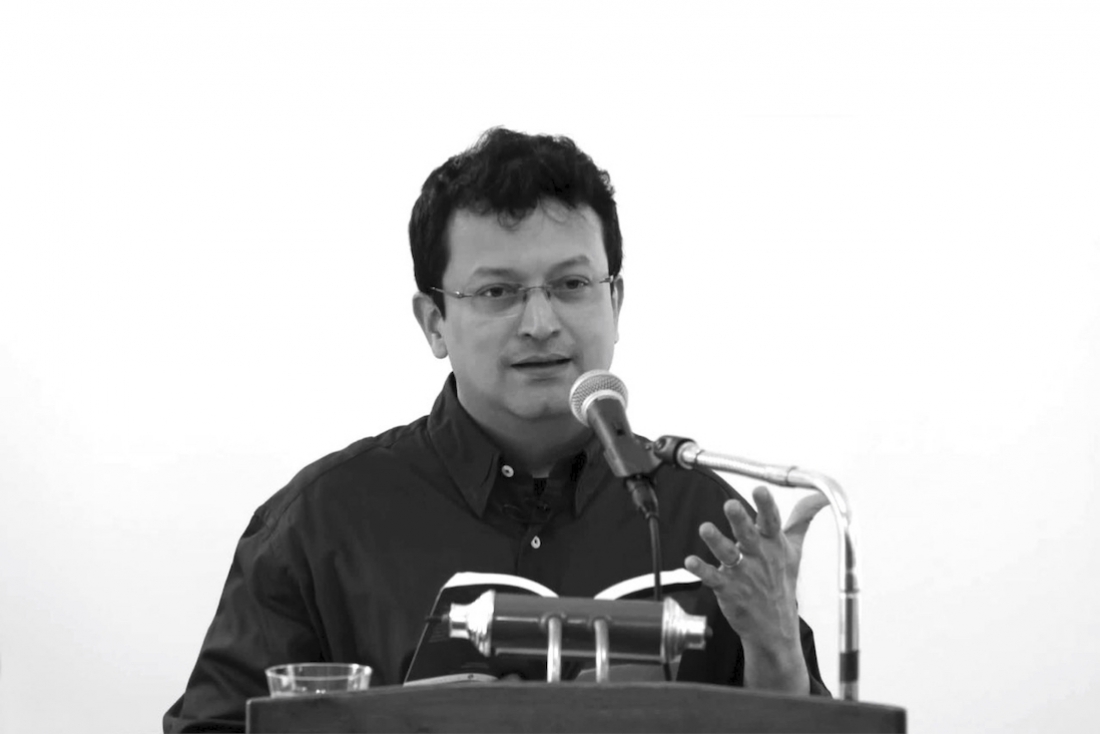

Talking poetry is one of the most difficult things to do. The word feels violated almost, unless the person in front of you is a master of the art – someone whose relationship with it is so strong that the poem form becomes him. It is then not a discussion, dialogue or discourse but a pure reflection of things, as it is with Ranjit Hoskote.
The poet, curator and cultural theorist has been in practice for decades and is actively involved with curating poetic archives especially with the Serendipity Arts Foundation. But he has never seen these as distinct duties – only different forms of creating.
‘Curating for me is as much a poetic endeavor as writing a poem or making a pot or making a wooden toy or building a wall – making, basically, is a tool,’ he connects.
But a poem is effortless. Curation, deliberate -
When I think of poetry, I really think of making a poem. It’s not like they fall from heaven. And in the same way when I curate an exhibition, it is so layered - you are looking at archives and collections, making studio visits; you’re entering the imagination of artists.
So it is both (effortless yet deliberate). The outcomes might be different - like a poem would be premised on voice and also, the way a poem looks on the page. Equally there’s a specialty to the exhibition - there’s a different set of constraints, there’s a different set of freedoms. It’s an architectural project. It’s a surprise each time in how I construct an exhibition. It’s an alternation of something you might expect, something that’s a complete surprise.
For example, you walk into a room that has Zarina Hashmi’s images and you turn a corner and you have Kashmiri artist Veer Munshi’s talking skulls and each skull is a talking poet. And you’re in another world.
“Curating for me is as much a poetic endeavor as writing a poem or making a pot or making a wooden toy or building a wall – making, basically, is a tool”
What do you think of this generation of poets? There were the Hindustani poets, Bombay poets and now there are Instagram poets!
The Bombay Poets, the progressive artists group, is something that exists in memory rather than in actuality. And after Jeet’s (Thayil) book everyone talks about the Bombay Poets – as Jeet himself says, it’s a novel. It’s being read as social history. And those of us who were actually part of Bombay poets – I know who they were – they were our teachers, our mentors, our friends - it’s full of nostalgia. In some cases, for something you don’t even know.
I think what’s important about the poetry scene in Bombay now is that it is so incredibly diverse. Honestly, the presence of the net has transformed poetry.
Is that in a good way or bad?
Both. In a good way because the possibilities of assembling inside the space is diverse - you can have zines and magazines and journals and reading groups. The downside is that people rush into print without necessarily reflecting on where they are. But having said that it’s incredible that there are so many poets of multiple generations all active at the same time.
Then there are publishing imprints that are extremely supportive, like Poetrywala, Copper Coin.
Do you think poetry an acquired art?
All art is acquired; all art is artifice. If you really take it seriously, you have to apply yourself to a certain apprenticeship. What counts is some self-knowledge about why you are doing this. For some people it’s a way of expressing something they have no other way of expressing.
“All art is acquired; all art is artifice. If you take it seriously, you have to apply yourself to a certain apprenticeship.”
If you see something, you have a half-glimpse of something that is more than what you are working on, and if you are then inspired to do the hard work of actually reading, coming to grips with the whole critical suggestion and being self critical – that’s the challenge. Some people just start writing – there’s a bizarre sense that you can start writing without reading. You can’t get up one fine day, pick up a sitar and say, hey I’m Ustad Vilayat Khan. You might strum, but that does not make you a musician.
What poetry are you working on?
I’m working on a translation of Ghalib. Some of that translation has appeared in journals earlier; it has been on for about 12 years and is a long-term project.
I’m also working on a Mir Taki Mir Project. I’ve been tweeting Mir translations - I use Twitter as a serious cultural medium. The more I work on Ghalib, the more I realize I have to go back to Mir who lived a century before and went through some of the same experiences of dislocation and chaos. And Mir’s is a very different kind of poetry; it’s marvelous.
Ghalib’s poetry is far more Persian, intricate, ironic, and intellectually tough. Mir’s is also very witty and subtle. But he uses a different kind of register – he uses a lot more of Braj and he’s a master of well-wrought emotion. I wouldn’t compare them – Ghalib himself was not a fan of anyone else, but he recognized Mir.
Text Soumya Mukerji